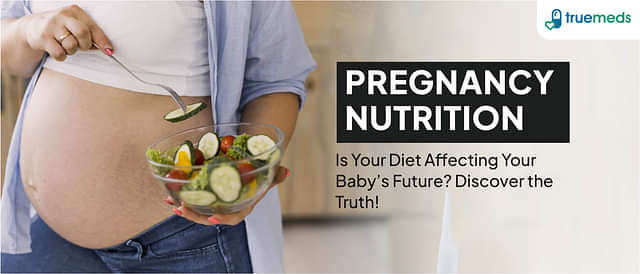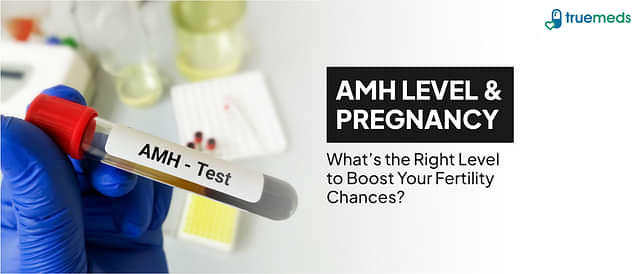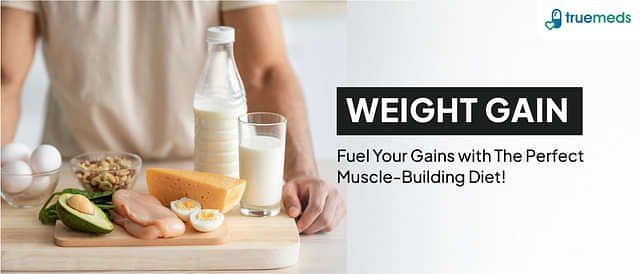Keto Diet: Overview, Benefits and Side Effects
Last updated on : 01 Dec, 2025
Read time : 8 min
The ketogenic diet (keto) is an eating pattern that drastically reduces carbohydrate intake and replaces it with a high amount of fat, along with moderate protein [1]. This metabolic shift forces the body to use fat, rather than glucose (sugar) from carbohydrates, as its primary fuel source. This process, known as ketosis, may offer potential benefits for weight management and certain health conditions [2]. To initiate this change, easily digestible carbohydrates like sugar, soda, pastries, and refined bread are typically eliminated first.
Understanding the Ketogenic State (Ketosis)
Ketosis is a natural metabolic process that occurs when the body does not have enough glucose from carbohydrates to use for energy.
When carbohydrate intake is severely restricted (typically to 20–50 grams per day), the liver begins to break down stored fat into molecules called ketones (or ketone bodies). These ketones are then used to fuel the brain, muscles, and other organs as an alternative energy source [1].
Reaching this state usually takes a few days of consistent low-carb eating. Common signs of entering ketosis include increased focus, reduced appetite, and potentially a distinct, fruity odour on the breath due to the by-products of ketone production [1].
Types of Ketogenic Diets
The macro ratio for standard keto is approximately 70% fat, 20% protein, and 10% carbohydrates. However, variations exist:
- Standard Ketogenic Diet (SKD): High fat, moderate protein, very low carb.
- High-Protein Ketogenic Diet: Similar to SKD but with a slightly increased protein ratio (e.g., 60% fat, 35% protein, 5% carbs).
- Cyclical Ketogenic Diet (CKD): Involves cycles of strict low-carb days (e.g., 5 days) followed by days of higher carbohydrate intake (e.g., 2 days), primarily used by high-performance athletes [3].
- Targeted Ketogenic Diet (TKD): Allows carbohydrates to be consumed specifically around high-intensity workouts.
Keto Diet Benefits and Clinical Evidence
The ketogenic diet has been studied for its effects across several health parameters, though more long-term research is needed to confirm lasting benefits [8].
Weight Loss Support
The keto diet can lead to a quicker initial weight loss compared to some other diets due to water weight shed and potentially increased energy expenditure from converting fat to ketones [2]. A meta-analysis indicated that individuals on a ketogenic diet achieved approximately 0.9 kg more weight loss at 12 months compared to those on a low-fat diet [3]. Additionally, the high-fat and moderate-protein composition often promotes satiety, leading to a natural reduction in calorie intake [8].
Blood Sugar Management and Diabetes
Low-carbohydrate diets, including keto, may lead to improved glycemic control and stability due to the dramatic reduction in glucose input [2]. A meta-analysis of clinical trials found that the ketogenic diet was associated with a reduction in HbA 1c levels, a key marker for long-term blood sugar control, in patients with type 2 diabetes [4]. However, individuals with type 1 diabetes must exercise extreme caution, as excessive ketones can lead to diabetic ketoacidosis (DKA), a serious and life-threatening condition [2].
Cardiovascular Health Markers
The keto diet may improve several cardiovascular risk factors, often leading to a reduction in triglycerides, an increase in HDL (“good”) cholesterol, and improvement in blood pressure [3, 8]. A systematic review suggests that these positive changes occur primarily when the diet emphasises high-quality, unsaturated fats over saturated and trans fats [5].
Epilepsy Treatment
The ketogenic diet was originally developed in the 1920s as a therapeutic dietary intervention for refractory epilepsy, particularly in children [1]. It remains an established, medically supervised treatment for seizure control in cases where medication is ineffective.
Polycystic Ovarian Syndrome
(PCOS) PCOS is often linked to insulin resistance and elevated insulin levels. A systematic review suggests that ketogenic diets may help improve hormonal markers and insulin sensitivity in women with PCOS, which may aid in managing symptoms like weight gain and ovarian function [7].
Practical Guide and Potential Risks
What Are The Basics for Keto?
To safely and effectively follow a ketogenic diet, focus on the following pillars:
- Limit Carbohydrates: Keep net carbohydrate intake low (20–50 grams per day is the general target). Strictly avoid sugary foods, grains (bread, rice, pasta), and processed snacks.
- Prioritize Healthy Fats: Include sources like avocados, nuts, seeds, olive oil, coconut oil, and fatty fish.
- Moderate Protein: Consume adequate protein (typically 20% of total calories) from sources like eggs, fish, chicken, and quality meat. Excessive protein intake can hinder ketosis as the body may convert it to glucose (gluconeogenesis) [1].
- Stay Hydrated: Drink plenty of water. The keto diet is diuretic and can quickly lead to dehydration and electrolyte imbalance [8].
- Meal Planning: Focus on whole, unprocessed foods and plan meals in advance to ensure consistent macro tracking and adequate nutrient intake.
Nutritious Keto Snacks
Healthy snacks that support ketosis include:
- Nuts and Seeds: Almonds, walnuts, flaxseeds, and sunflower seeds.
- Cheese: Full-fat cheese slices or paneer cubes.
- Boiled Eggs: A protein-rich and filling snack.
- Avocados: Eaten plain or with a little salt and pepper.
- Olives: A healthy source of fat.
Unsweetened, full-fat Greek Yoghurt (in moderation due to trace carbs).
Risk Factors and Complications
Following the keto diet requires careful monitoring, as both short-term side effects and long-term health risks are possible [8].
Management of Keto Flu: You may reduce initial symptoms by ensuring ample fluid intake, consuming extra salt/broth for sodium, and taking physician-approved mineral supplements [2].
Conclusion
The ketogenic diet is a structured low-carbohydrate, high-fat approach designed to shift your metabolism toward fat-burning (ketosis). It has documented benefits in supporting weight loss, managing blood sugar for type 2 diabetes, and treating epilepsy. However, due to its restrictive nature, the keto diet carries risks of nutrient deficiency and potential complications for the kidney and liver, particularly when followed long-term or without proper planning [8]. It is essential to focus on balanced nutrition, adequate hydration, and ongoing medical supervision to ensure safety and effectiveness.
Frequently Asked Questions (FAQs)
Is the keto diet safe for everyone?
No, the keto diet is not safe for everyone. People with pre-existing conditions involving the liver, kidneys, or pancreas, or those with certain metabolic disorders, should consult a doctor before starting [8]. It is also not recommended for pregnant or breastfeeding women.
How long does it take to enter ketosis?
It typically takes 2–4 days of eating fewer than 50g of net carbs per day to enter ketosis, but this varies significantly based on individual metabolism and prior carbohydrate intake [1].
Can I do keto if I’m a vegetarian?
Yes, a vegetarian keto diet is possible by utilising dairy (if acceptable), eggs, nuts, seeds, high-fat plant foods (e.g., avocado), and specific low-carb plant-based protein powders for protein and fat sources.
What happens if I eat too many carbs on keto?
Consuming excess carbs (a “cheat meal”) may interrupt ketosis, leading your body to revert to using glucose for energy instead of fat. This process is often called “falling out of ketosis.”
Do I need to count calories on a keto diet?
Yes, in the long term, calories still matter for weight loss. While initially, tracking carbs and fat is the priority to achieve ketosis, tracking your total energy intake is eventually necessary to maintain a caloric deficit for consistent weight loss results.
Disclaimer
The information in this article is for educational purposes only and is not intended as a substitute for professional medical advice, diagnosis, or treatment. Always consult a registered dietitian or qualified healthcare provider before beginning any new diet plan. Individual needs may vary depending on existing health conditions, medication use, and dietary restrictions.
References
[1] Masood, W., Annamaraju, P., Khan Suheb, M. Z., & Uppaluri, K. R. (2025). Ketogenic diet. In StatPearls. StatPearls Publishing. https://www.ncbi.nlm.nih.gov/books/NBK499830/
[2] Crosby, L., Davis, B., Joshi, S., Jardine, M., Paul, J., Neola, M., & Barnard, N. D. (2021). Ketogenic diets and chronic disease: Weighing the benefits against the risks. Frontiers in Nutrition, 8, 702802. https://doi.org/10.3389/fnut.2021.702802
[3] Dyńka, D., Kowalcze, K., Charuta, A., & Paziewska, A. (2023). The ketogenic diet and cardiovascular diseases. Nutrients, 15(15), 3368. https://doi.org/10.3390/nu15153368
[4] Alarim, R. A., Alasmre, F. A., Alotaibi, H. A., Alshehri, M. A., & Hussain, S. A. (2020). Effects of the ketogenic diet on glycemic control in Diabetic Patients: Meta-Analysis of Clinical Trials. Cureus, 12(10), e10796. https://doi.org/10.7759/cureus.10796
[5] Paoli, A., Mancin, L., Bianco, A., Lembo, S., Marcolin, G., & Caprio, M. (2015). Ketogenic diet and cardiovascular risk factors: A review of the state of the art. Lipids in Health and Disease, 14(1). https://doi.org/10.1186/s12944-015-0023-5
[6] Tan-Shalaby, J. (2017). Ketogenic diets and cancer: Emerging evidence. Federal Practitioner: For the Health Care Professionals of the VA, DoD, and PHS, 34(Suppl 1), 37S-42S. https://pmc.ncbi.nlm.nih.gov/articles/PMC6375425/
[7] Cannarella, R., Rubulotta, M., Leonardi, A., Crafa, A., Calvo, A., Barbagallo, F., La Vignera, S., & Calogero, A. E. (2025). Effects of ketogenic diets on polycystic ovary syndrome: a systematic review and meta-analysis. Reproductive Biology and Endocrinology, 23(1). https://doi.org/10.1186/s12958-025-01411-1
[8] Masood, W., Annamaraju, P., Khan Suheb, M. Z., & Uppaluri, K. R. (2025). Ketogenic diet. In StatPearls. StatPearls Publishing. https://www.ncbi.nlm.nih.gov/books/NBK499830/
Disclaimer
Our healthcare experts have carefully reviewed and compiled the information presented here to ensure accuracy and trustworthiness. It is important to note that this information serves as a general overview of the topic and is for informational purposes only. It is not intended to diagnose, prevent, or cure any health problem. This page does not establish a doctor-patient relationship, nor does it replace the advice or consultation of a registered medical practitioner. We recommend seeking guidance from your registered medical practitioner for any questions or concerns regarding your medical condition.
Popular Articles
Recommended Articles
Recent Articles
Company
About UsHealth ArticleHealth StoriesHealth LibraryDiseases & Health ConditionsAyurvedaUnderstanding Generic MedicinesAll MedicinesAll BrandsNeed HelpFAQSecuritySubscribe
Registered Office Address
Grievance Officer
Download Truemeds
Contact Us
Our customer representative team is available 7 days a week from 9 am - 9 pm.
v4.11.1
2026 - Truemeds | All rights reserved. Our content is for informational purposes only. See additional information.
Our Payment Partners











































